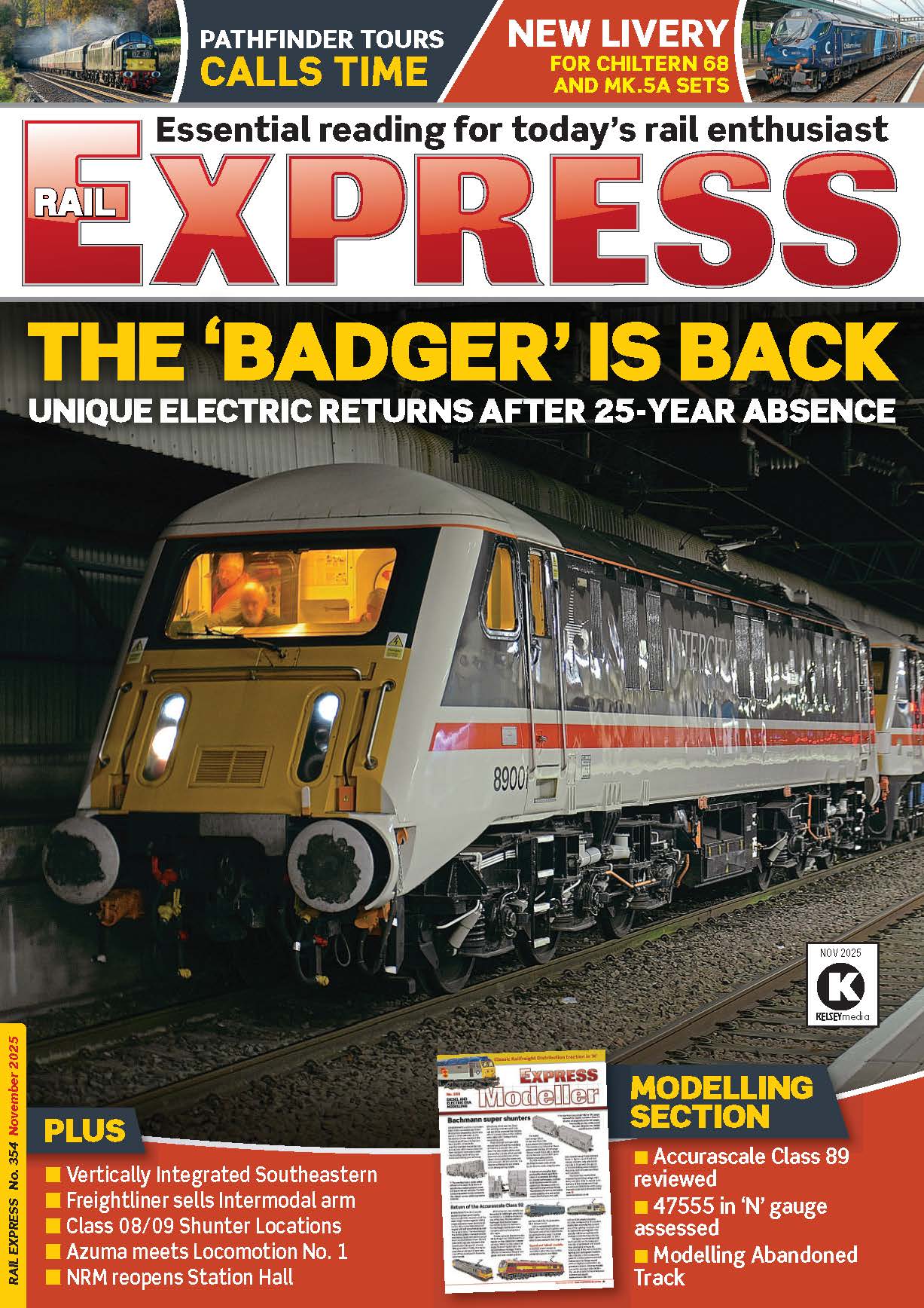Ahead of a new edition of his book about life as a BR trainman in the 1990s, Tim Helme looks back to the remaining Class 45s that could still be found in the Derby area back then.
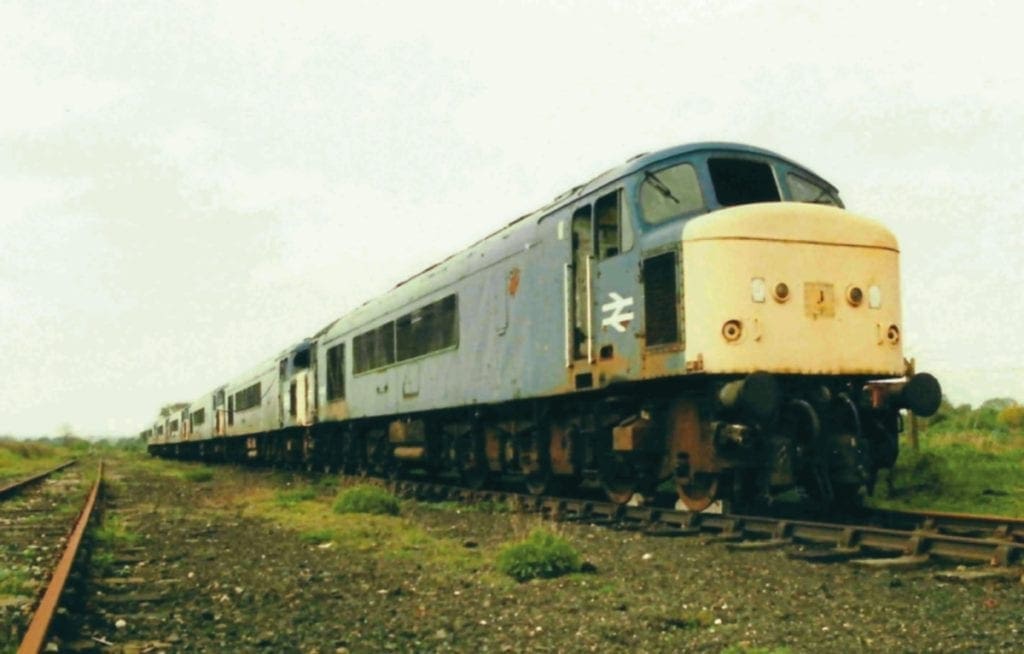
The six withdrawn Class 45s at Egginton Junction in 1990 shortly before their removal. Robert Woodman. Before its move and brief storage at Egginton Junction, No. 45136 could be found in the RTC Sidings at Derby, where it is pictured on September 26, 1989.
It was scrapped at MC Metals, Glasgow, in 1992. All photos by Richard King unless stated twenty years later and preserved classmate No. 45118 was also stored in the RTC Sidings, where it is pictured on February 5, 2017. Tim HelmeA view from the cab of No. 45121 on November 26, 1991, when it was dumped near the fuel storage road at Derby 4 Shed.
Enjoy more Rail Express Magazine reading every month.
Click here to subscribe & save.
Note the seemingly casual diesel storage.No. 45121 at Derby Litchurch Lane Carriage Works in August 1992 after the collision test with a Class 158 vehicle. The loco had been repainted on one side and one end. Withdrawn No. 45015 in the Toton ‘playpen’ in April 1995. This unique survivor still exists at the Battlefield Line, but its destiny is almost certainly the scrapyard.
I CONFESS the only time I got to ride in the cab of Class 45 at Derby was as a young, wide-eyed rail enthusiast rather than as a member of the train crew, but several examples of the class were still knocking around when I started at 4 Shed in 1990.
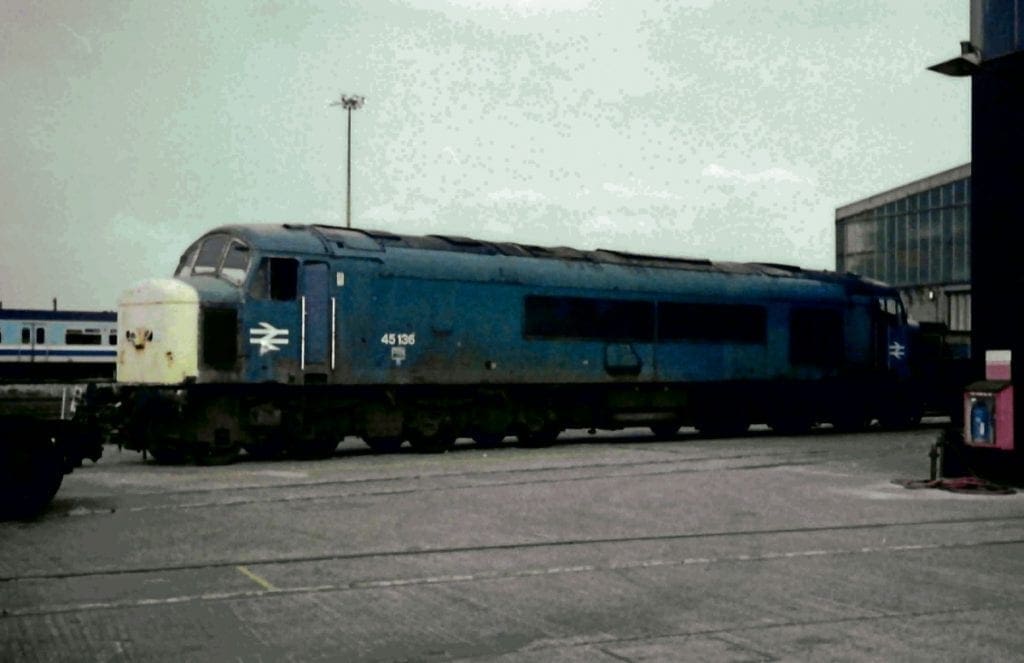
Derby was essentially the spiritual home of the ‘Peaks’, and no driver I spoke to ever had a bad word to say about them. Although restricted to 90mph, they were thrashed to within an inch of their lives up and down the Midland Main Line, but still came back for more.
My first trainman job at Derby in 1990 was acting as secondman on an engineering train, headed by No. 47971 Robin Hood, which had been tasked to assist in the lifting of the Mickleover Test Track accessed from the Up Stoke at Egginton Junction.
At the time, there were half a dozen derelict Class 45s stored in the sidings there (Nos. 45111/125/126/136/146/148), most of which had been drafted in from the scrap lines at March depot to act as dead weight loads during the Class 60 testing conducted between July 1989 and May 1990.
During these tests, Class 60 had struggled to maintain air pressure throughout the train, so one of the traction inspectors decided to fire up the Class 45s to assist. Even though these locos had been left to rot, most started the first time and worked perfectly. For operational reasons, only four of the locos were used as train weight, with No. 45148 remaining in the headshunt at Mickleover during testing.

Someone became a little overzealous and removed the connection between the Up Stoke line and the sidings shortly after the test track had been lifted – so, in typical railway fashion, it had to be temporarily reinstated in March 1992 to extricate the derelict ‘45s’.
The locos were moved away to Toton in two convoys. The first, headed by No. 31271, consisted of Nos. 45148, 45126 and 45111; the second, headed by No. 37222, consisted of Nos. 45125, 45146 and 45136. With the exception of No. 45125 (now preserved), the rest were scrapped at MC Metals in Glasgow that same year.
As the trains were unfitted (the locos had no functioning train brakes), they each had a brake van at the rear. One of my colleagues, who had not long passed his trainman training, was supposed to be the secondman on one of these jobs but was somehow conned/coerced into undertaking the guard’s role.
After the event, I asked him how it had gone. He admitted that he had not been entirely sure what he was supposed to be doing, but the driver had told him: “Just get your head down in the brake van and I’ll stand you up when I want you.” Such was the ‘duty of care’ in the 1990s!
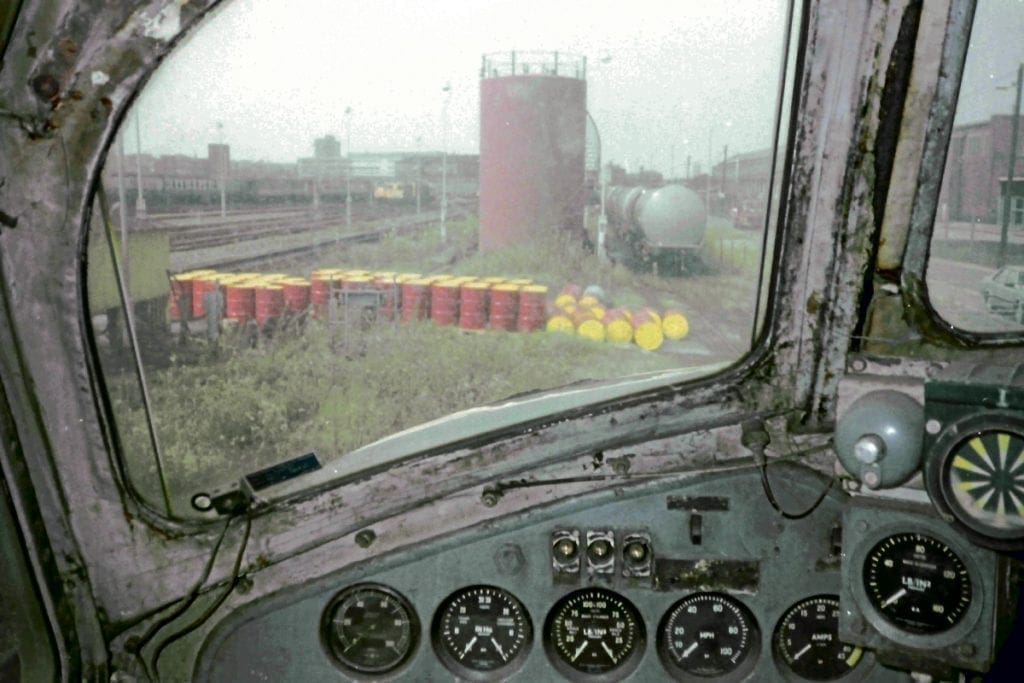
Before its move and brief storage at Egginton Junction, No. 45136 could be found in the RTC Sidings at Derby. Another Class 45/1, preserved No. 45118The Royal Artilleryman, ended up being stored at the RTC about 20 years later. This loco, rather fittingly, was also the last Class 45 to be overhauled ‘over the road’ at Derby Loco Works in 1986.
Other unfitted work that occasionally came our way was the movement of preserved locomotives. These were generally transported from local preservation societies to the various depot open days around the region.
Coalville and Leicester were always popular venues, and it was after one of these events when, along with a driver, I was tasked to return Nos. D100 (45060) Sherwood Forester, D8 (44008) Penyghent and the green-liveried Class 28 ‘Metrovick’ from Leicester to Peak Rail at Matlock.
Travelling passenger to Leicester, we made our way across to the depot where our train, headed by a Class 47, was waiting. However, my brake van was missing two vital pieces of equipment and before departure, I would have to obtain some coal for the stove, plus two old-fashioned paraffin side lamps with interchangeable red lenses.
According to the BR Rule Book, the brake van on an unfitted train had to display three red lights on the main line (a tail-light and two side lights) and, when on a goods line or loop, a white light must be displayed on the side adjacent to a running line.
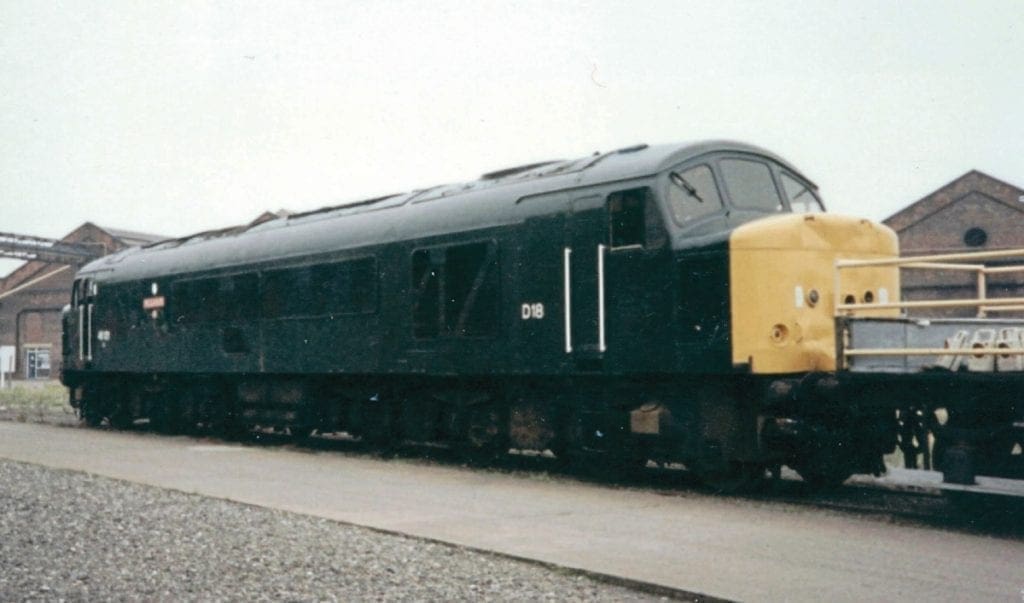
During the trip from Leicester to Derby, we were switched between main line and goods line several times, so I was busy altering lenses for most of the journey. We also generated a bit of interest from the trainspotters atDerby station as we continued northbound. They were no doubt wondering why the guard was leaning out of the brake van fiddling around with two paraffin lamps.
At Ambergate, the driver obtained the token that gave us permission to proceed onto the Matlock branch. I would also need it to operate the ground frame at Matlock station, which would allow entry onto Peak Rail itself.
An important thing to remember, which could easily be overlooked in all the excitement, was that the train was unbraked. So, before anyone set about uncoupling the loco or brake van, it was wise to apply at least one handbrake. The owner of the locos at Peak Rail had already witnessed one trainman, who had forgotten this small point, sprinting after his runaway locos.
As soon as we arrived at Matlock, the heavens opened and I got completely soaked in a matter of seconds. By the time I had figured out the ground frame and finished shunting, I was feeling rather miserable.
Fortunately, I had maintained a good fire in the brake van and hung my clothes to dry as best as possible. The mash (tea) can had boiled and I enjoyed a nice hot cuppa as we trundled back along the branch as just engine and brake.
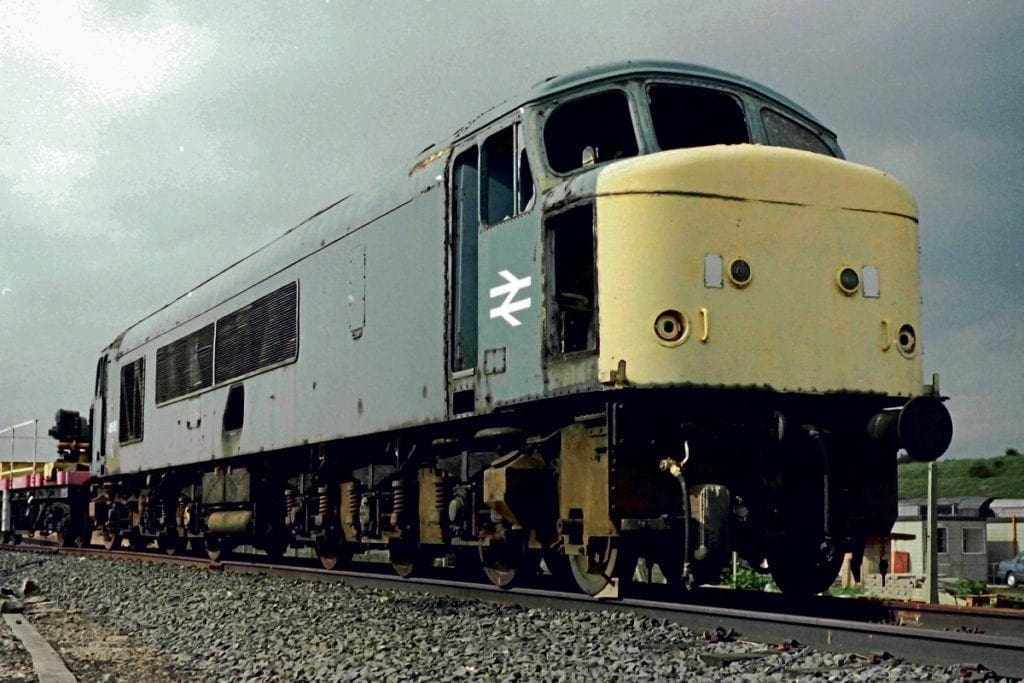
As we passed through Derby station for the second time that day, the trainspotters were no doubt wondering why a half-naked guard was now flapping his clothes out of the brake van.
After a derailment, ‘Peak’ No. 45121 was sent to Derby Etches Park to serve as a carriage pre-heating unit but was never used in this capacity. It was then dumped near the fuel storage road at4 Shed for a while in 1992, before being moved into the Carriage Works (by then owned by ABB Transportation) for use in a collision test with a single Class 158 test vehicle numbered No. 158999.
For the collision test – and, one assumes, photographic purposes – the loco was given a partial ‘makeover’ with one side painted green and one yellow end redone.
The Class 158 test vehicle was coupled to a ballasted flat wagon, in order to simulate a two-car unit, and accelerated to 30mph by ‘Chopper’ No. 20227 on loan from the Midland Railway Centre. Once up to speed, No. 20227 eased off and allowed the test unit to collide with No. 45121 head-on.
It was reported that the unit reared up initially, with all wheels on its front bogie spinning before making contact with the track again, shoving the ‘Peak’, with all its wheels locked, a distance of 11 metres.
But it was the DMU that came off worst, receiving severe damage to its lower front end and underframe equipment. Inside were three crash-test dummies, which happily survived the impact, but it was also reported that it was difficult to distinguish between these and ordinary 4 Shed train crew.
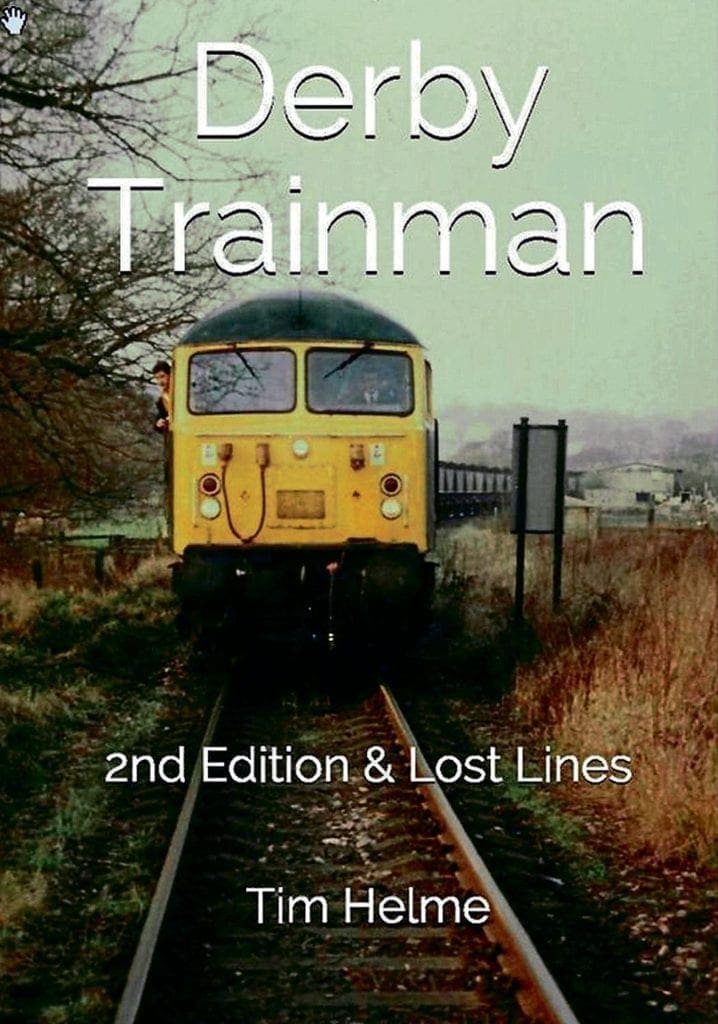
The ‘45’ finally met its end at the Carriage Works in September the following year (1993). However, all was not completely lost, as a colleague of mine managed to ‘liberate’ one of its warning horns before the move from4 Shed to the Carriage Works.
Early ‘Peak’ No. 45015, when built at Derby Loco Works in 1960 as No. D14, was fitted with split-box route indicators and nose-end corridor connections for use when working in multiple with other like-fitted locomotives.
It was withdrawn from service on March 3, 1986, with a seized traction motor and to facilitate its removal from the main line, a spring had to be removed from the offending axle and the axlebox itself wedged with wooden blocks. This allowed the wheel to clear the top of the rail by a couple of inches, enabling the loco to be moved.
The ‘45’ was deposited in the Toton ‘playpen’, where it stood until October 2002 after suffering the removal of many of its parts. Ironically, it was because of this failure and ad hoc solution (which, incidentally, is still extant today) that made the loco difficult to move and thus saved it from the scrapyard.
No. 45015 now resides at the Battlefield Line in Leicestershire but is in a very poor condition – probably beyond hope – and has an uncertain future. It currently has standard sealed beam nose-ends but is the last Class 45 formerly fitted with nose-end connecting doors, so is (for now) a unique survivor.


